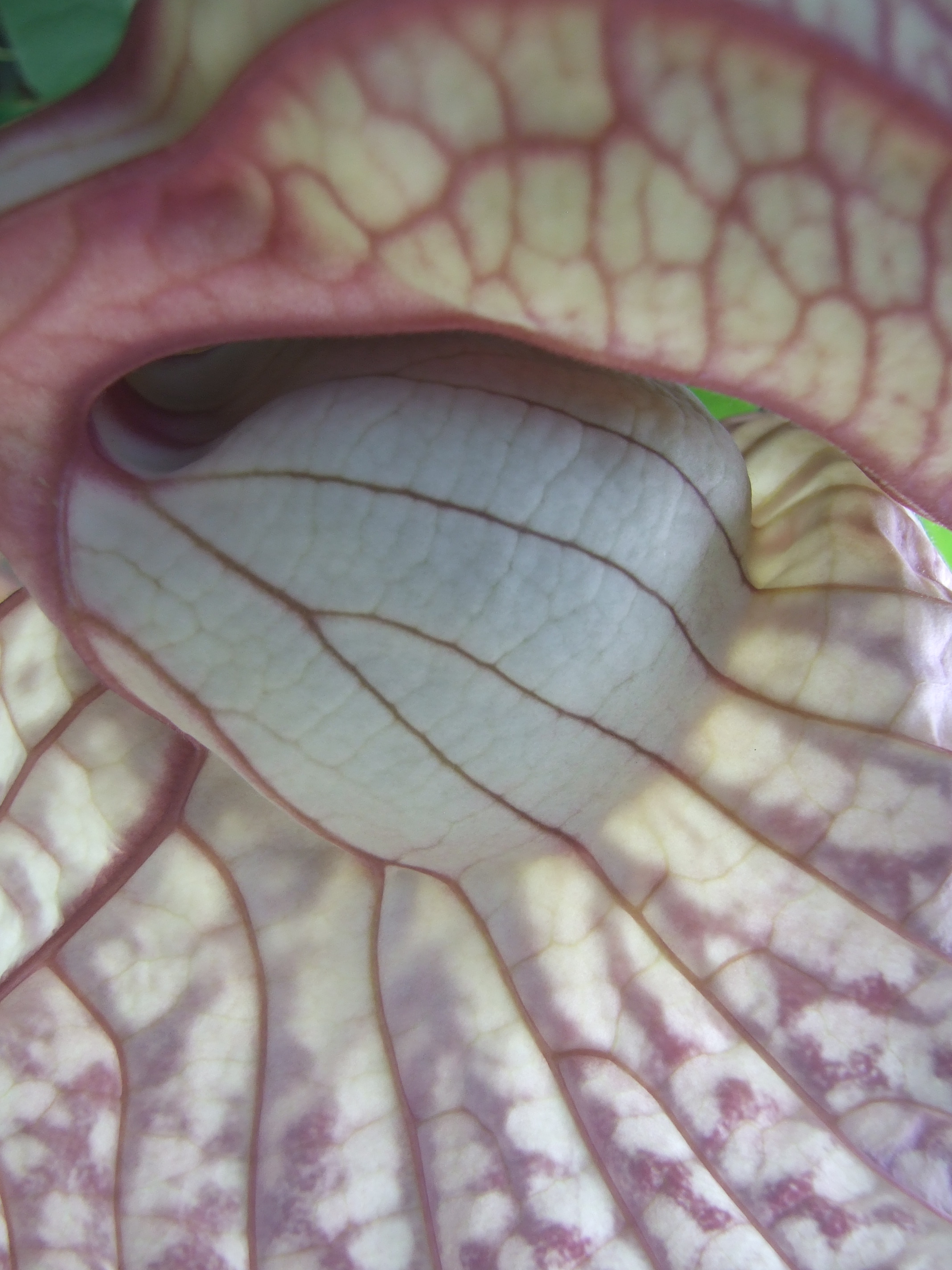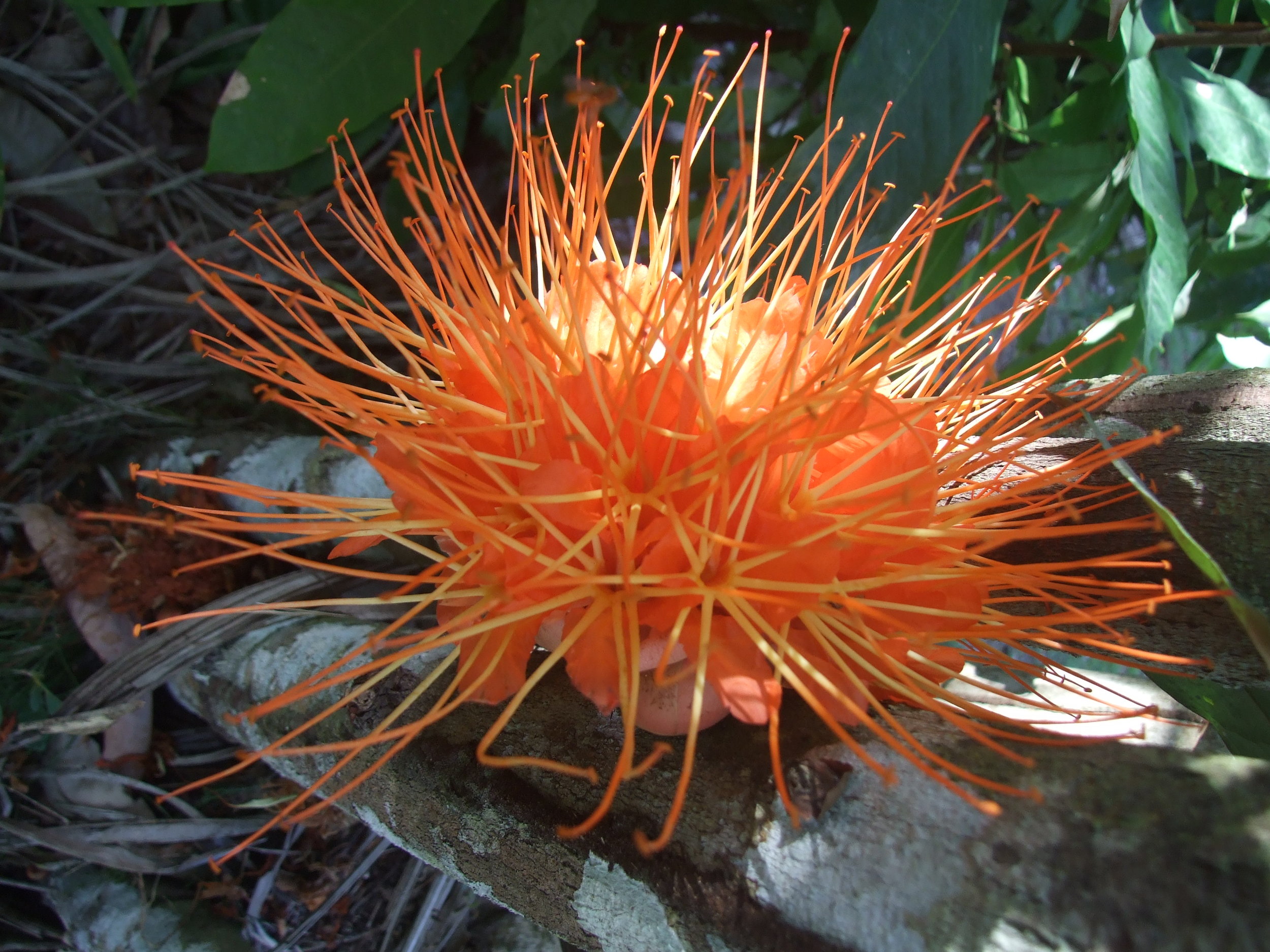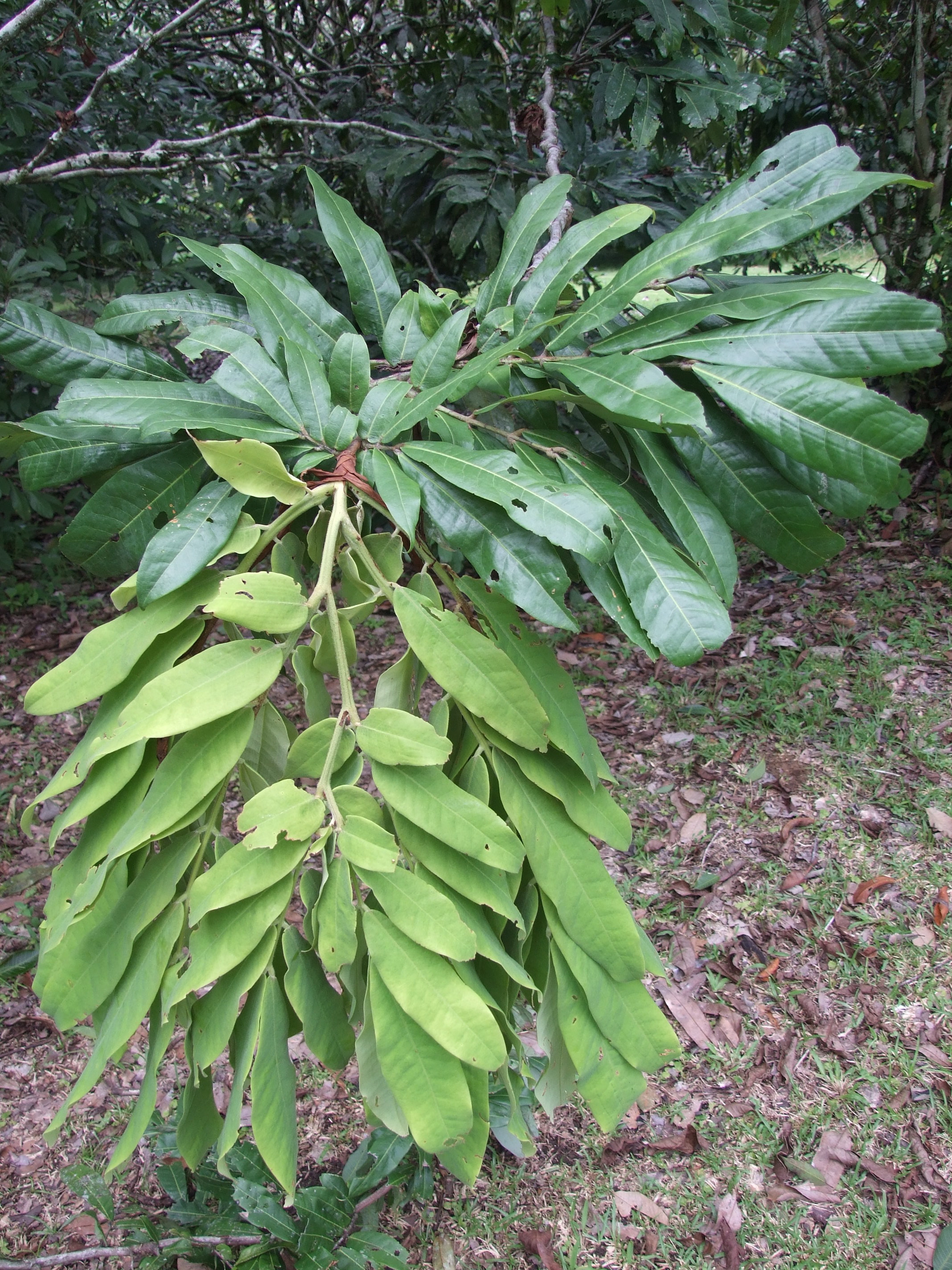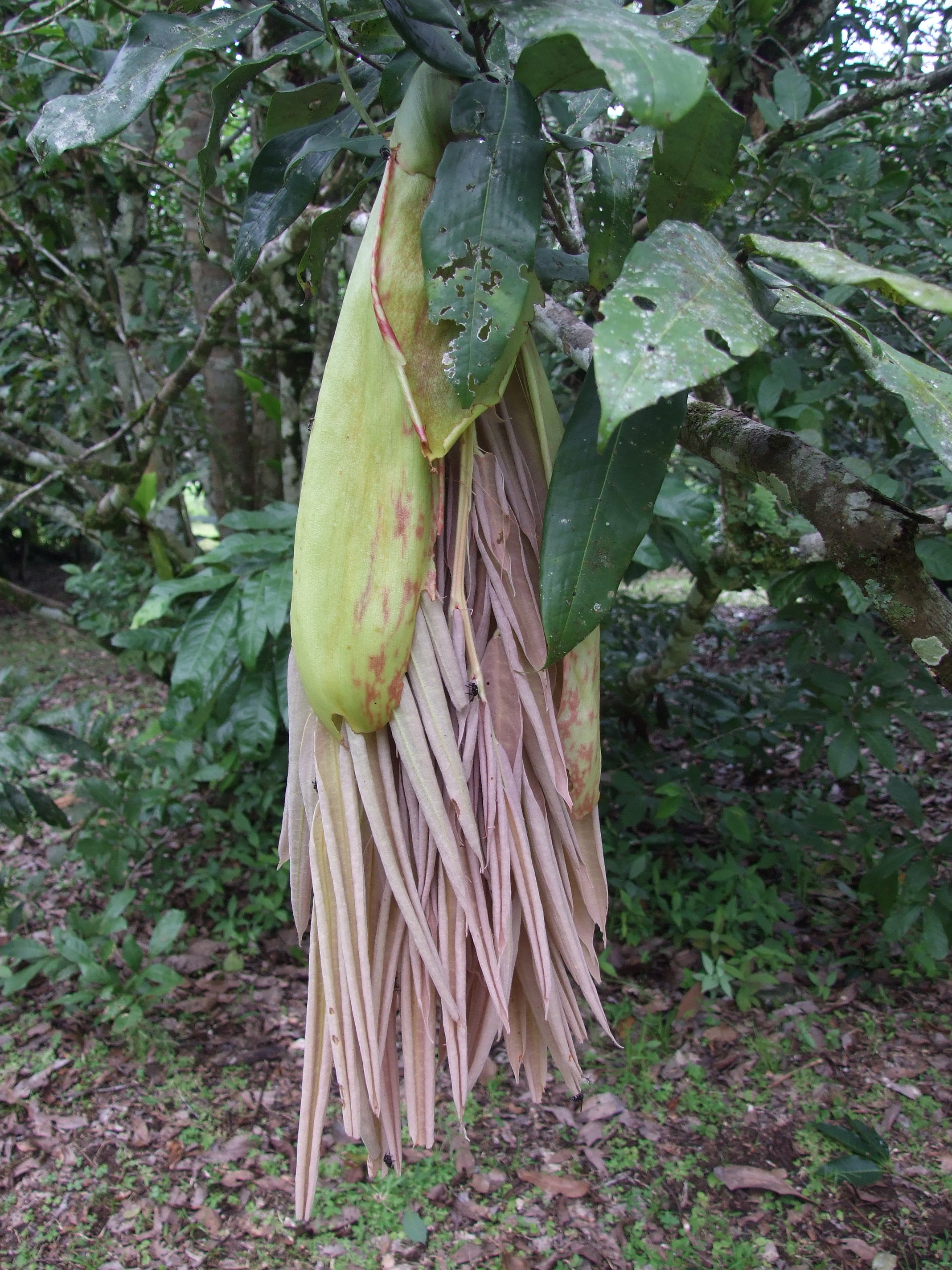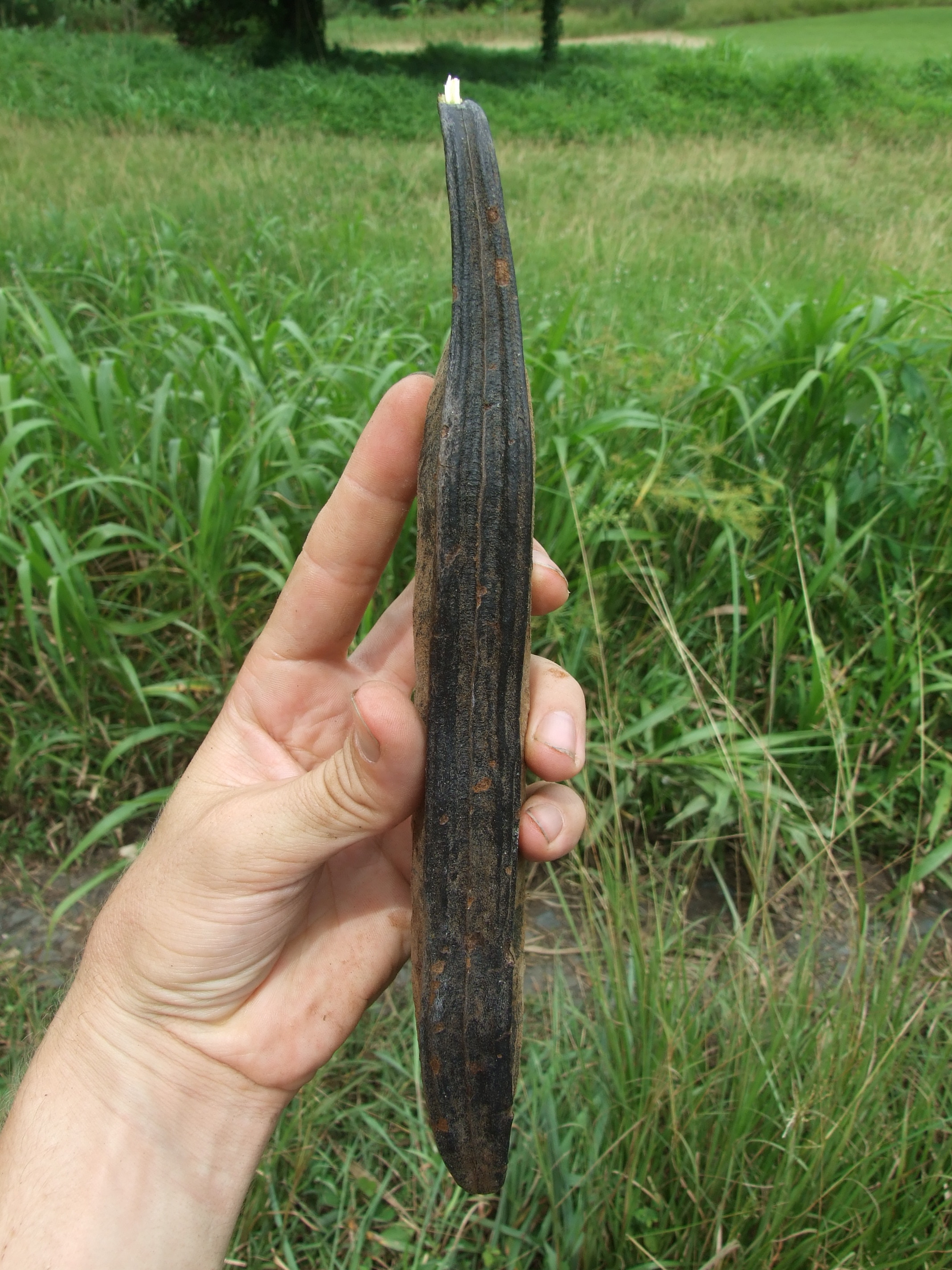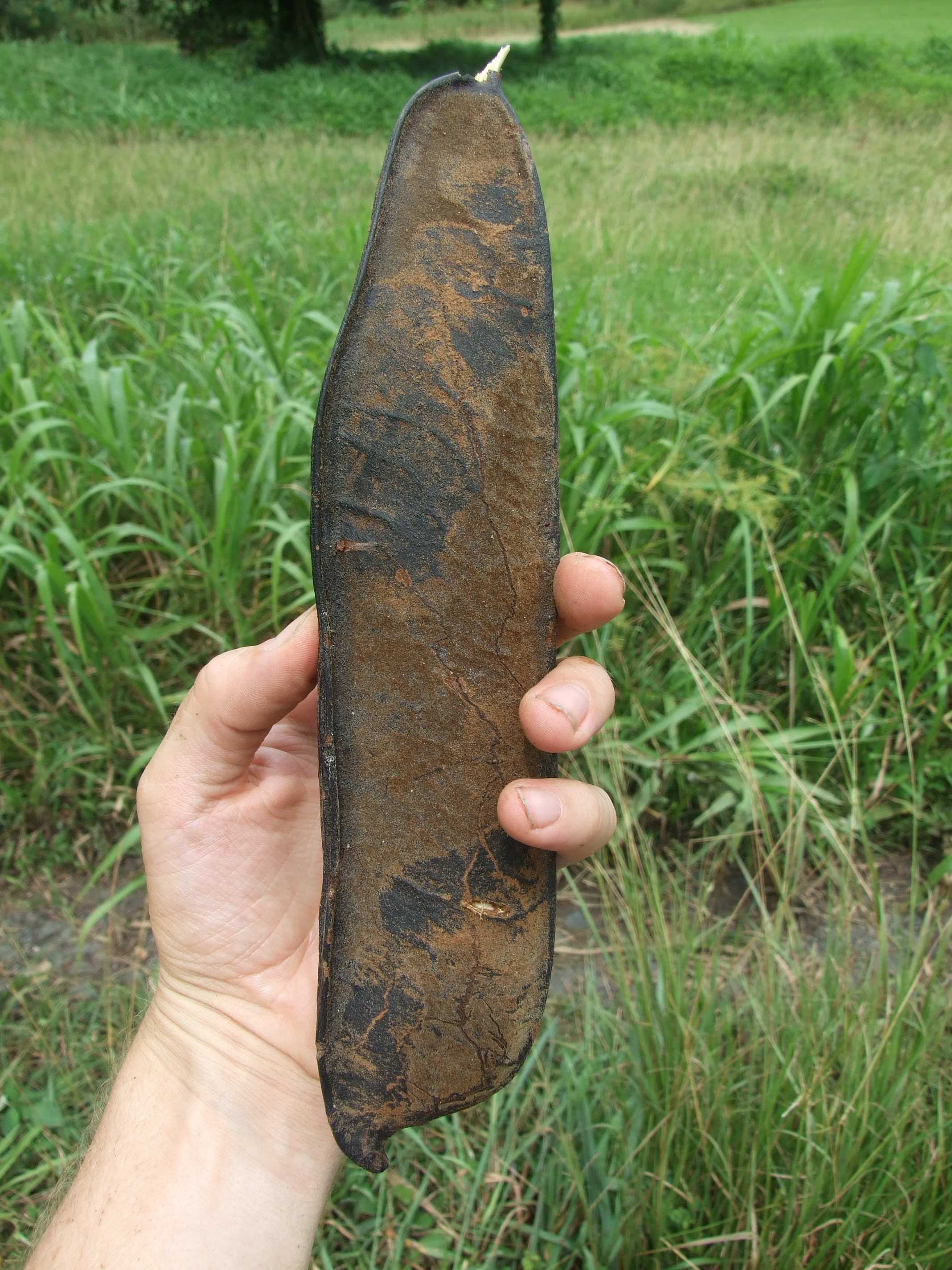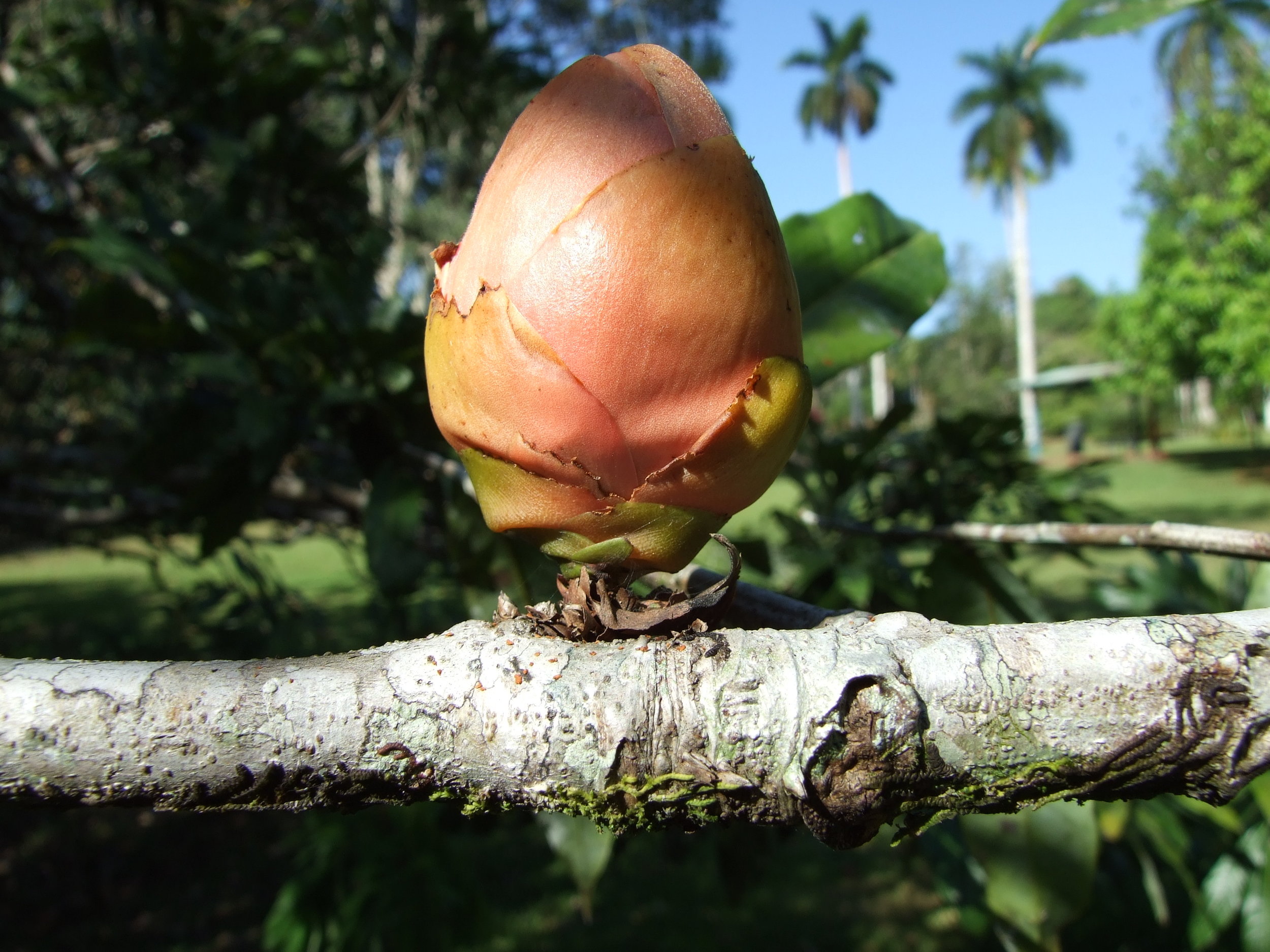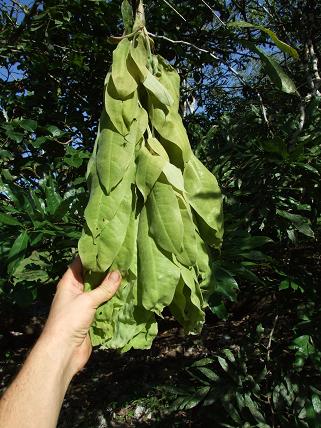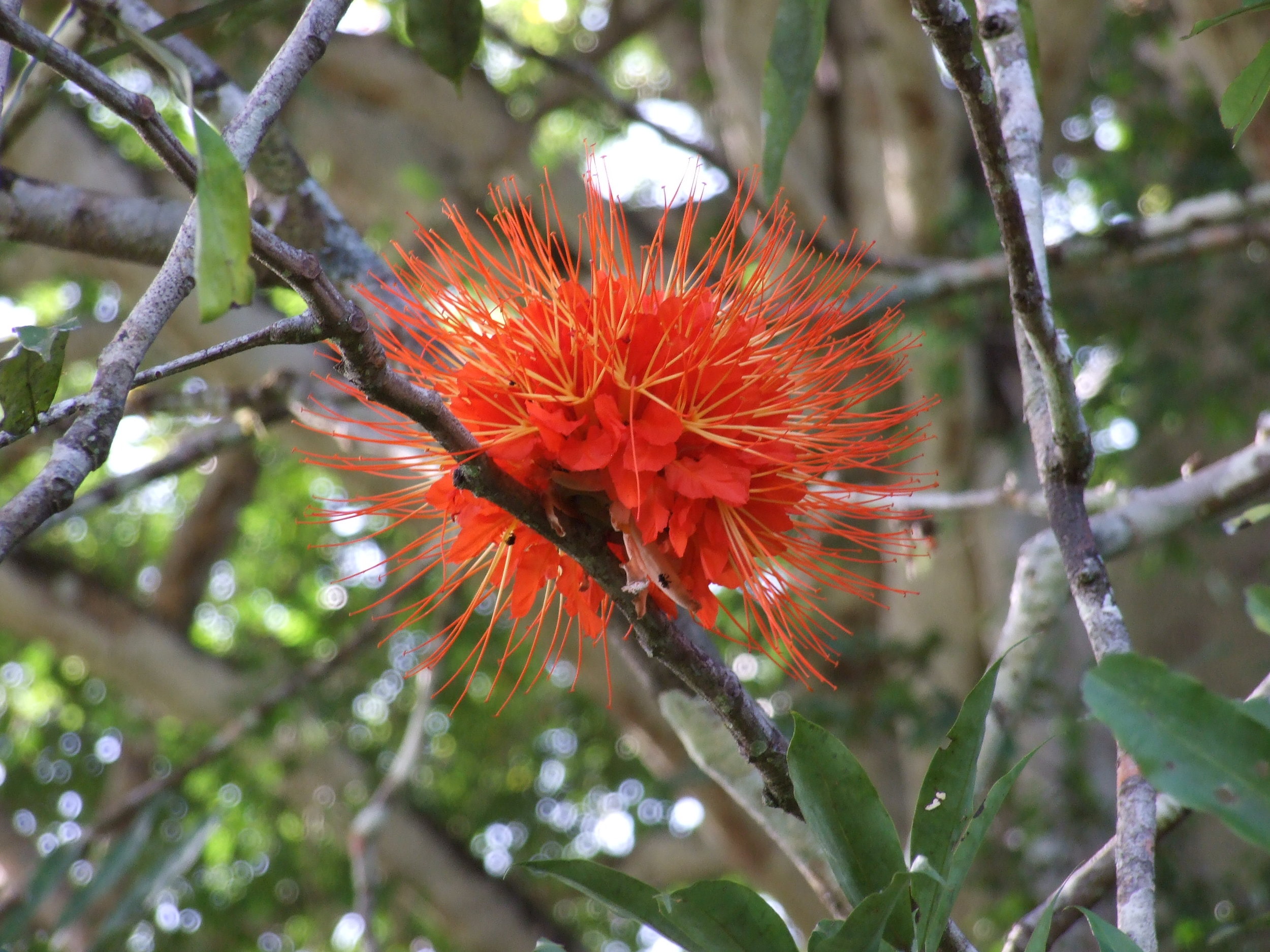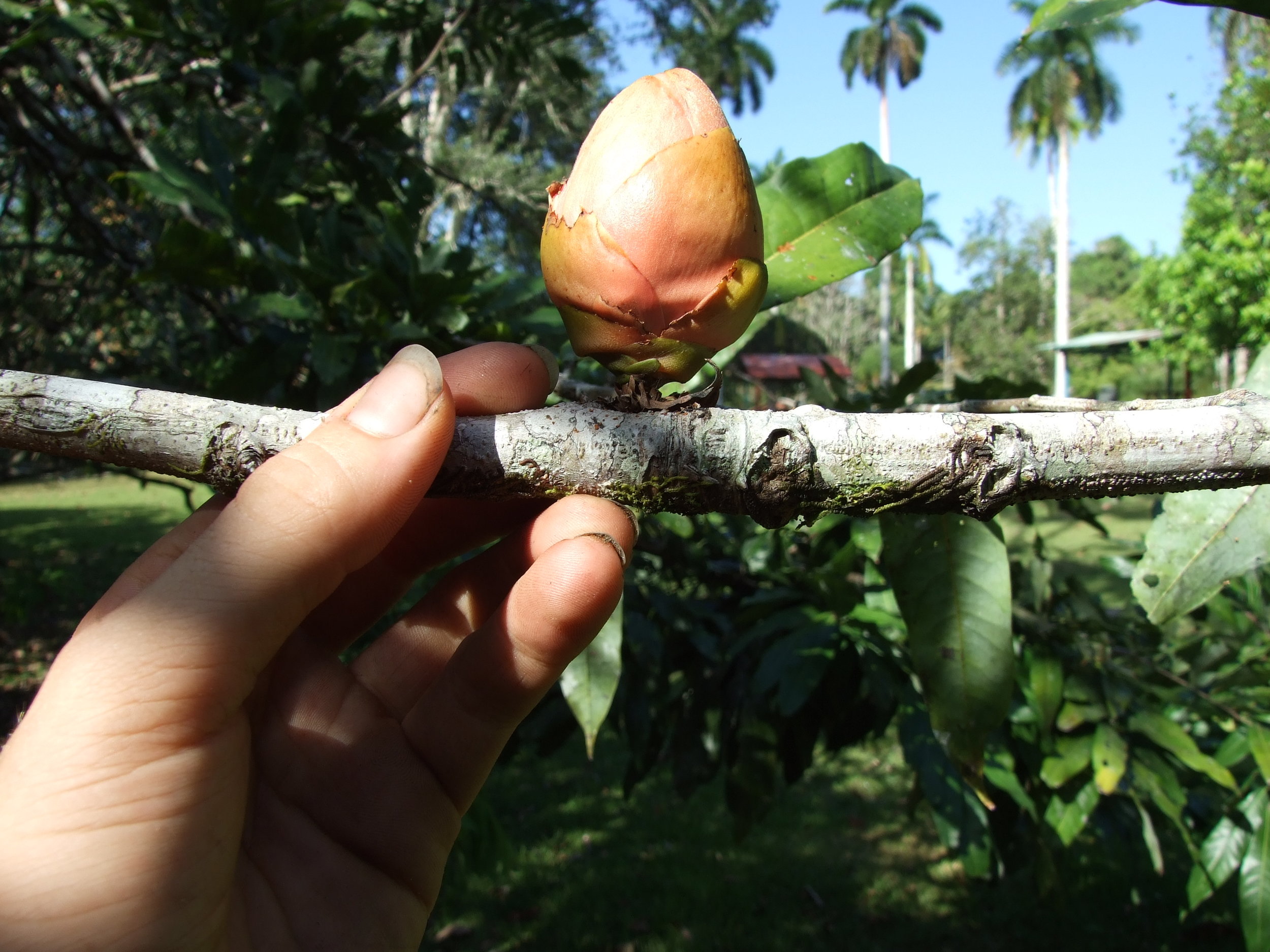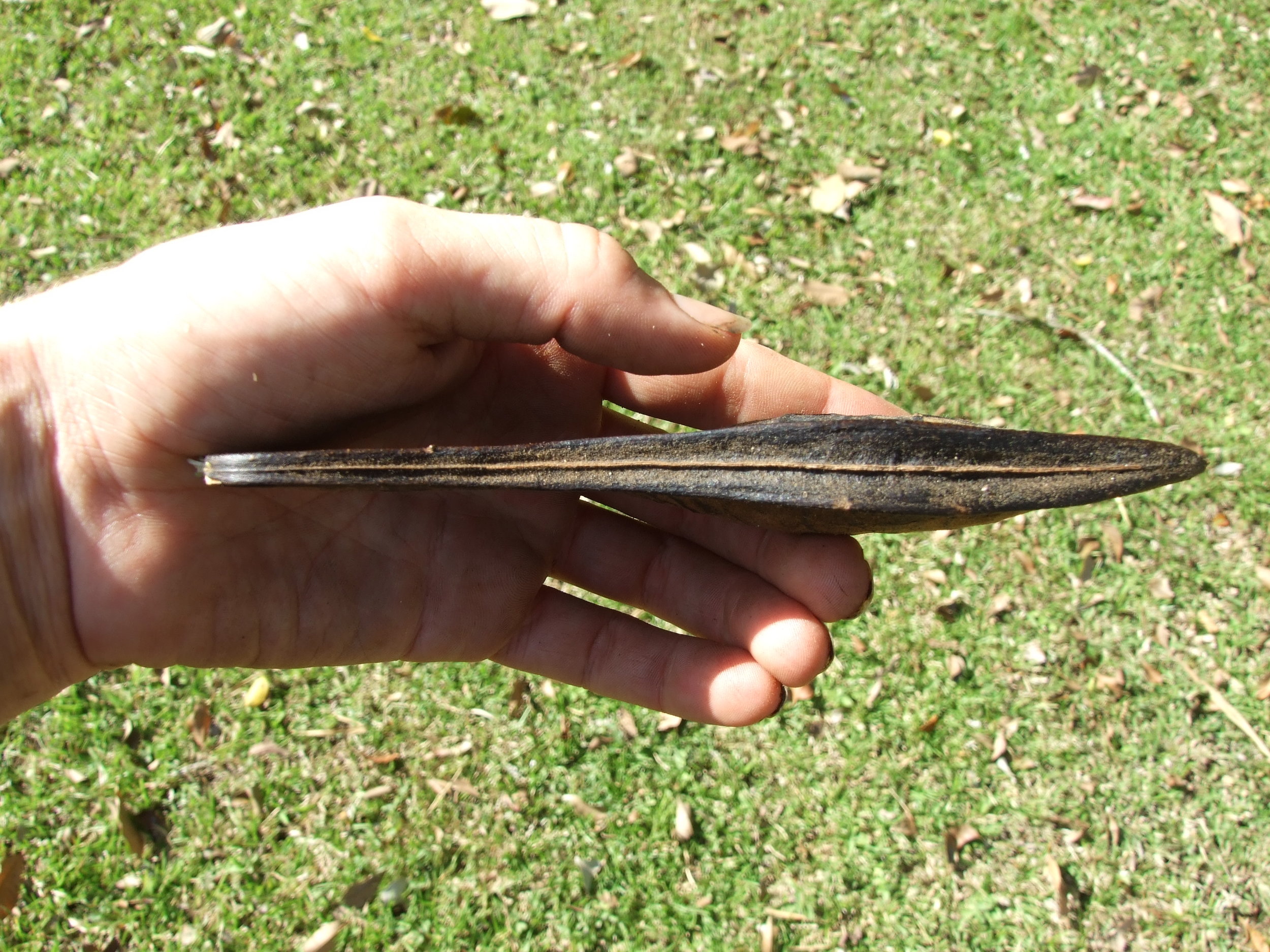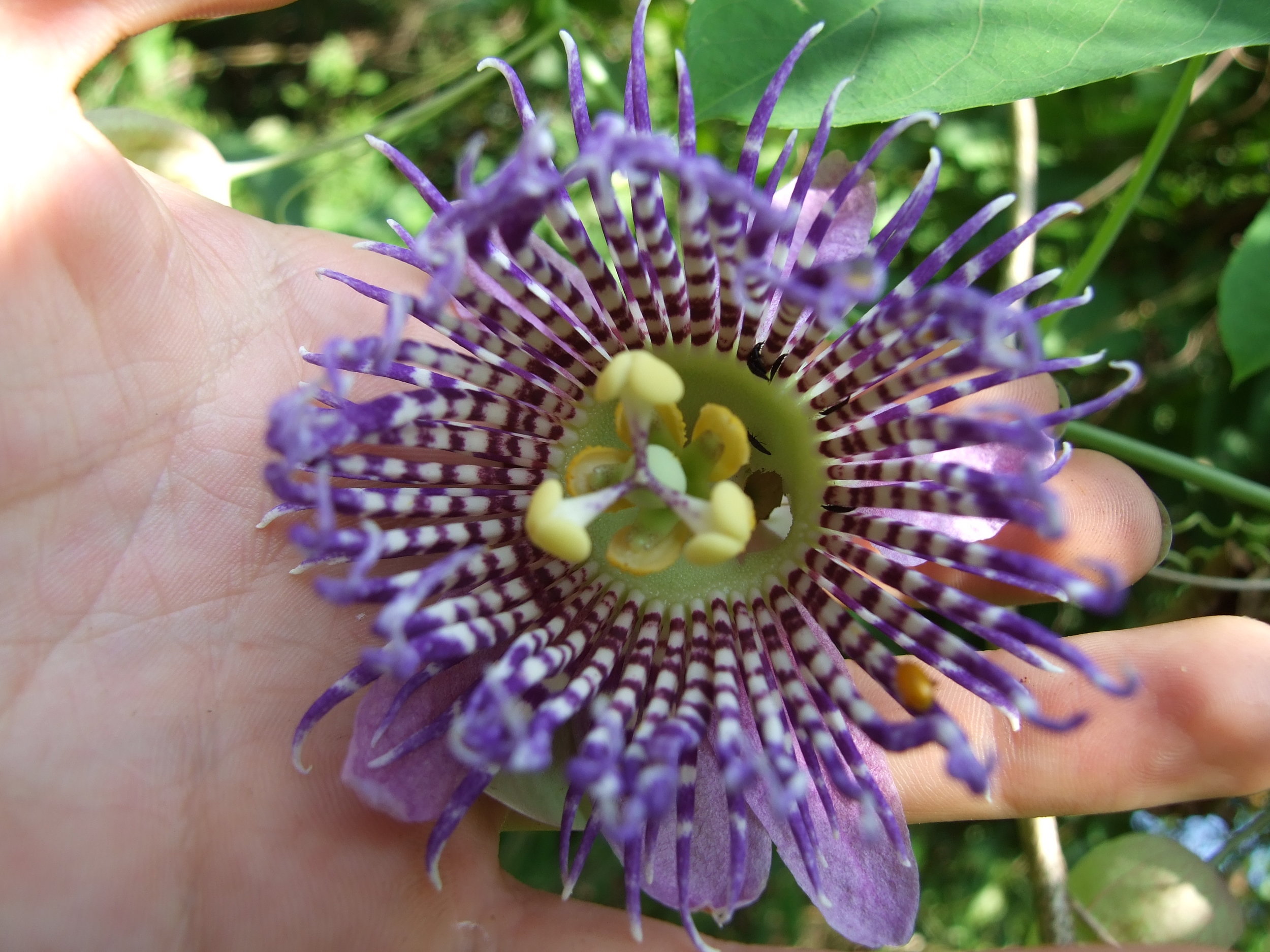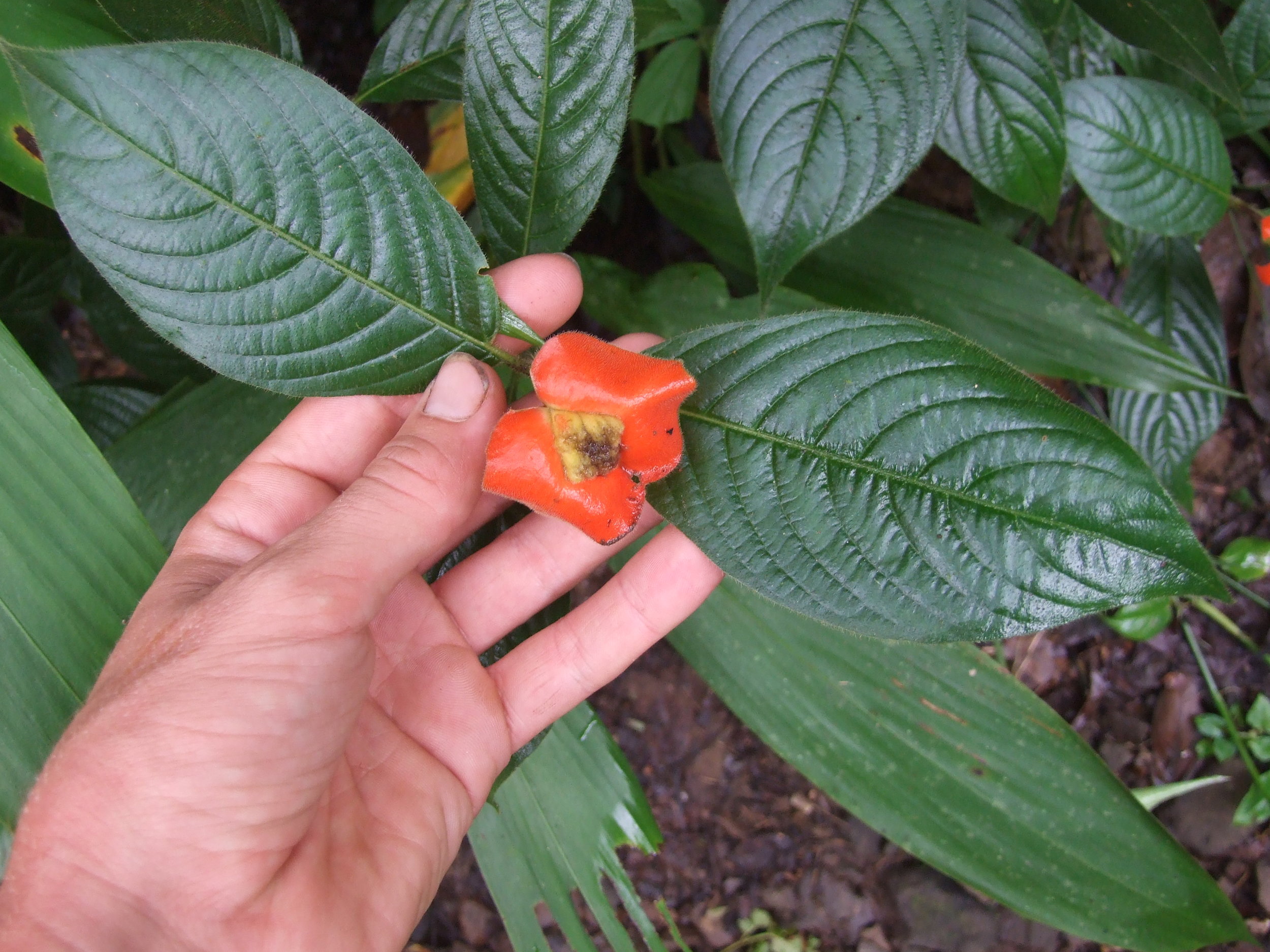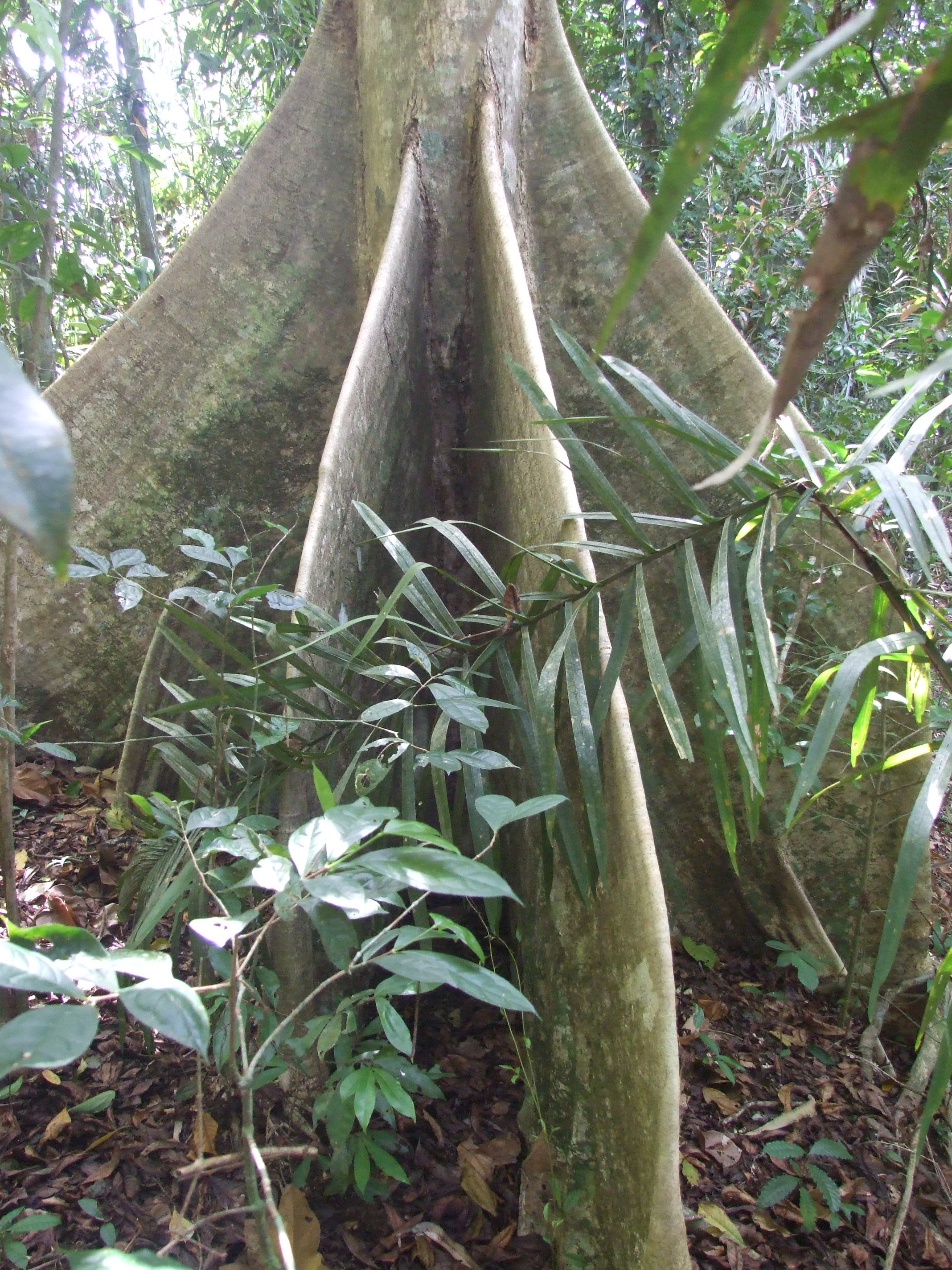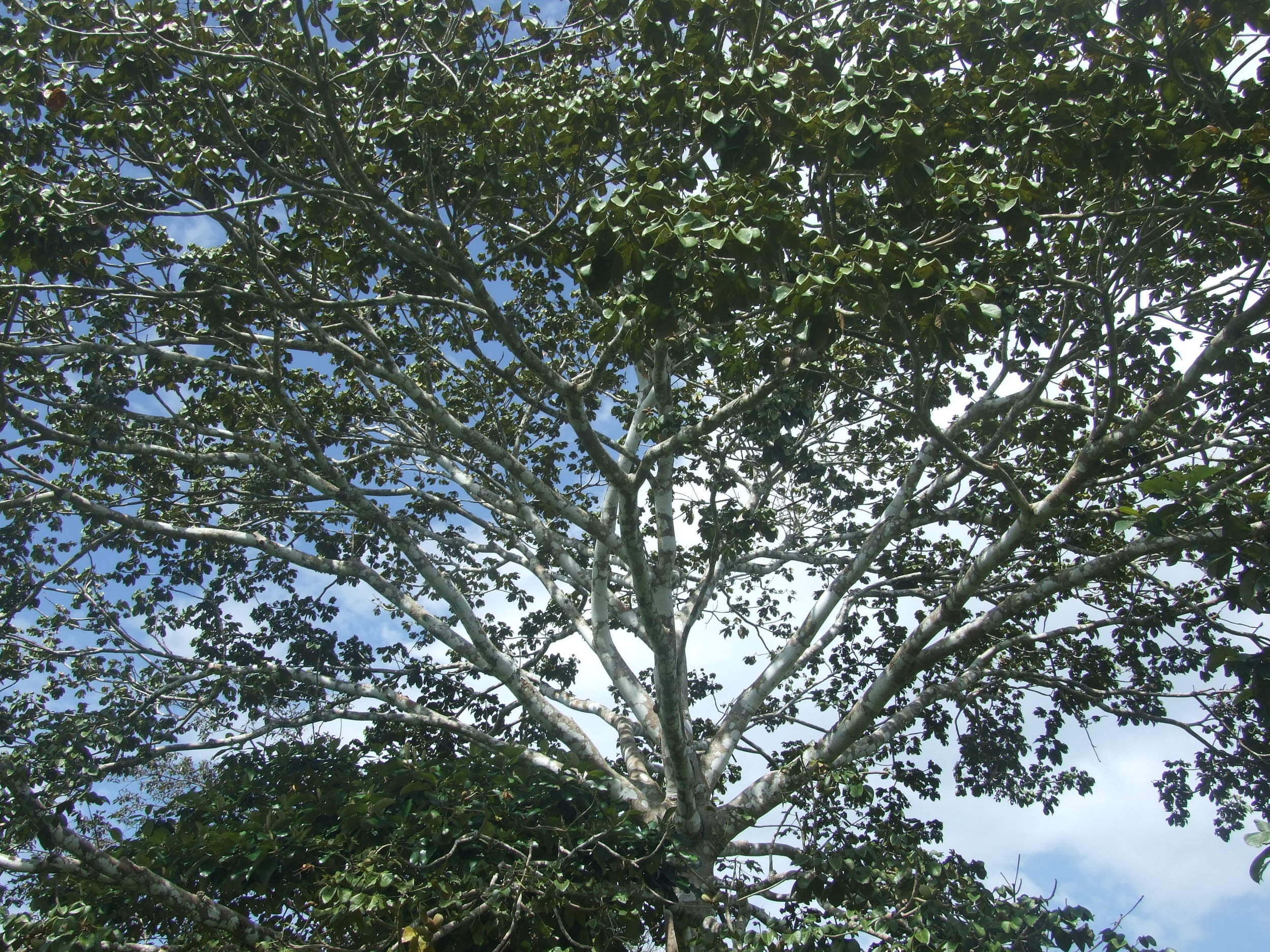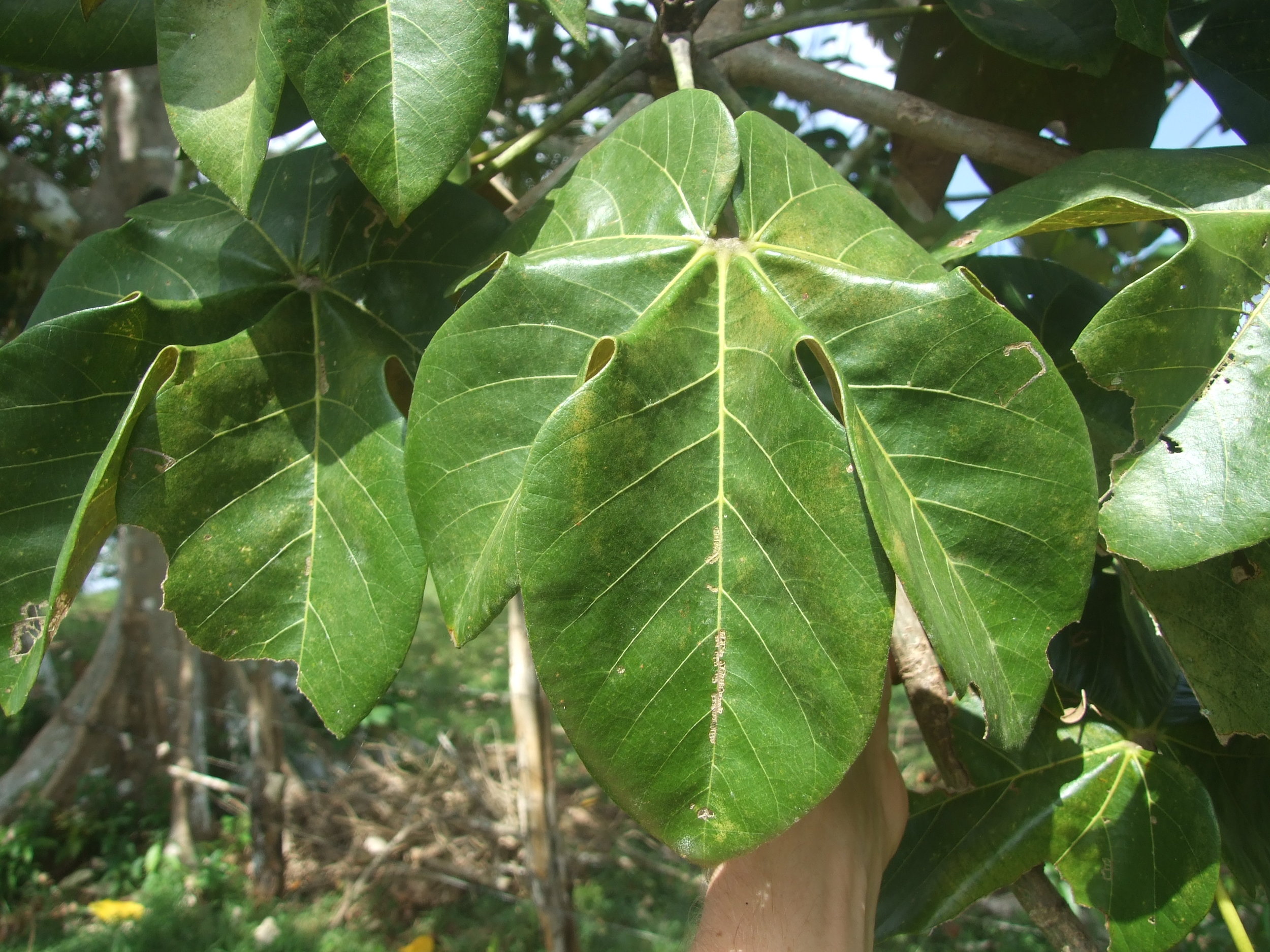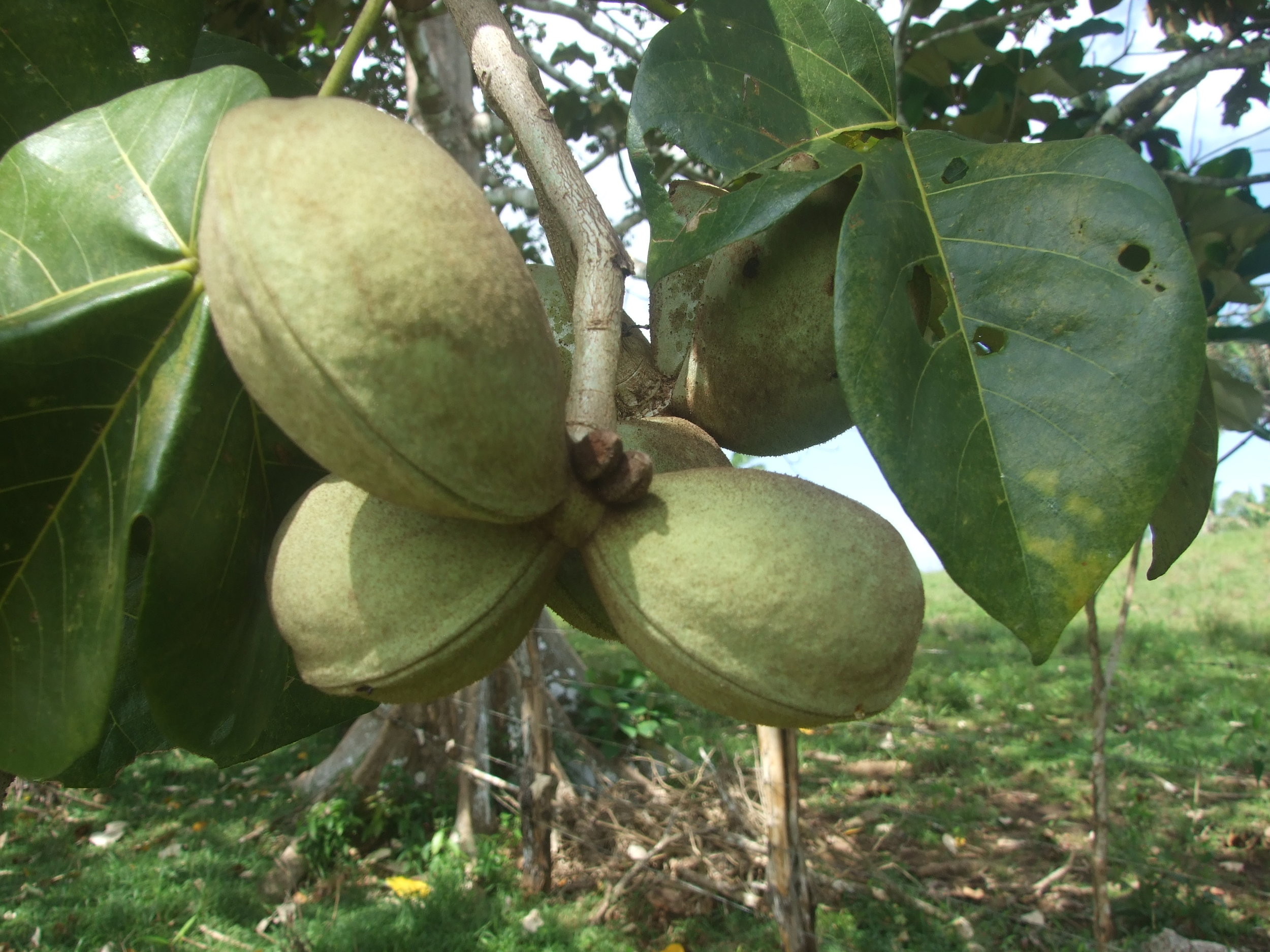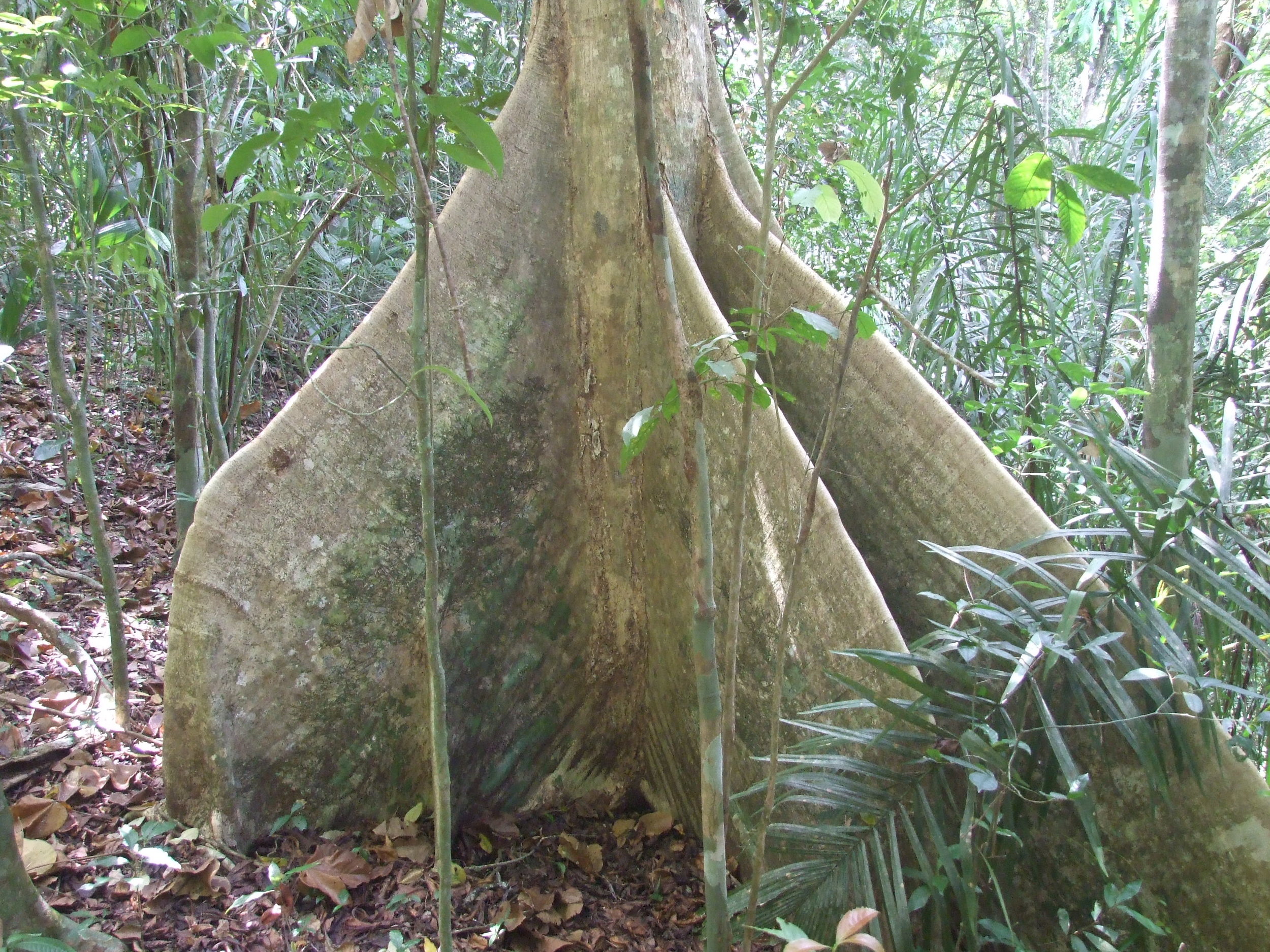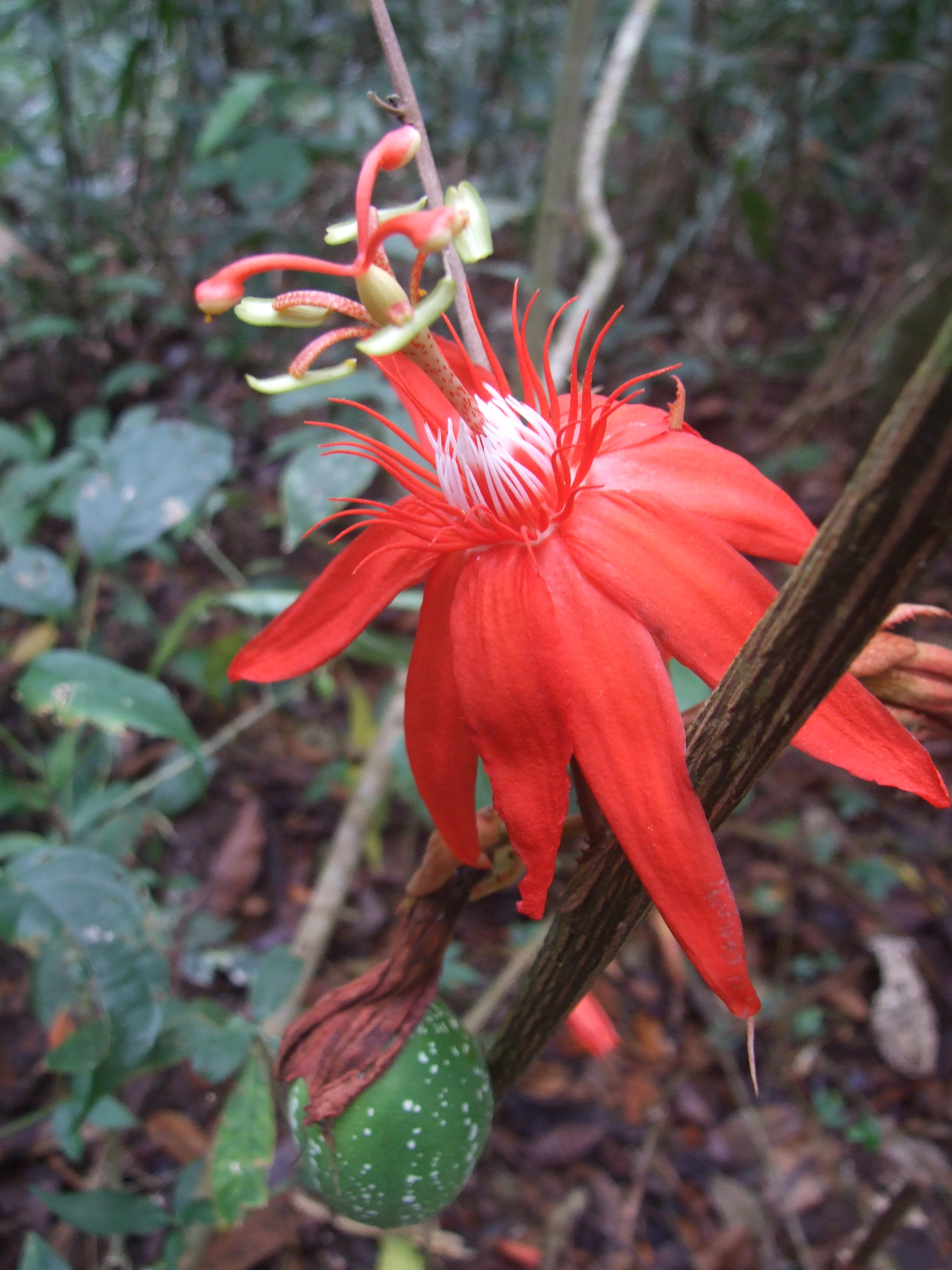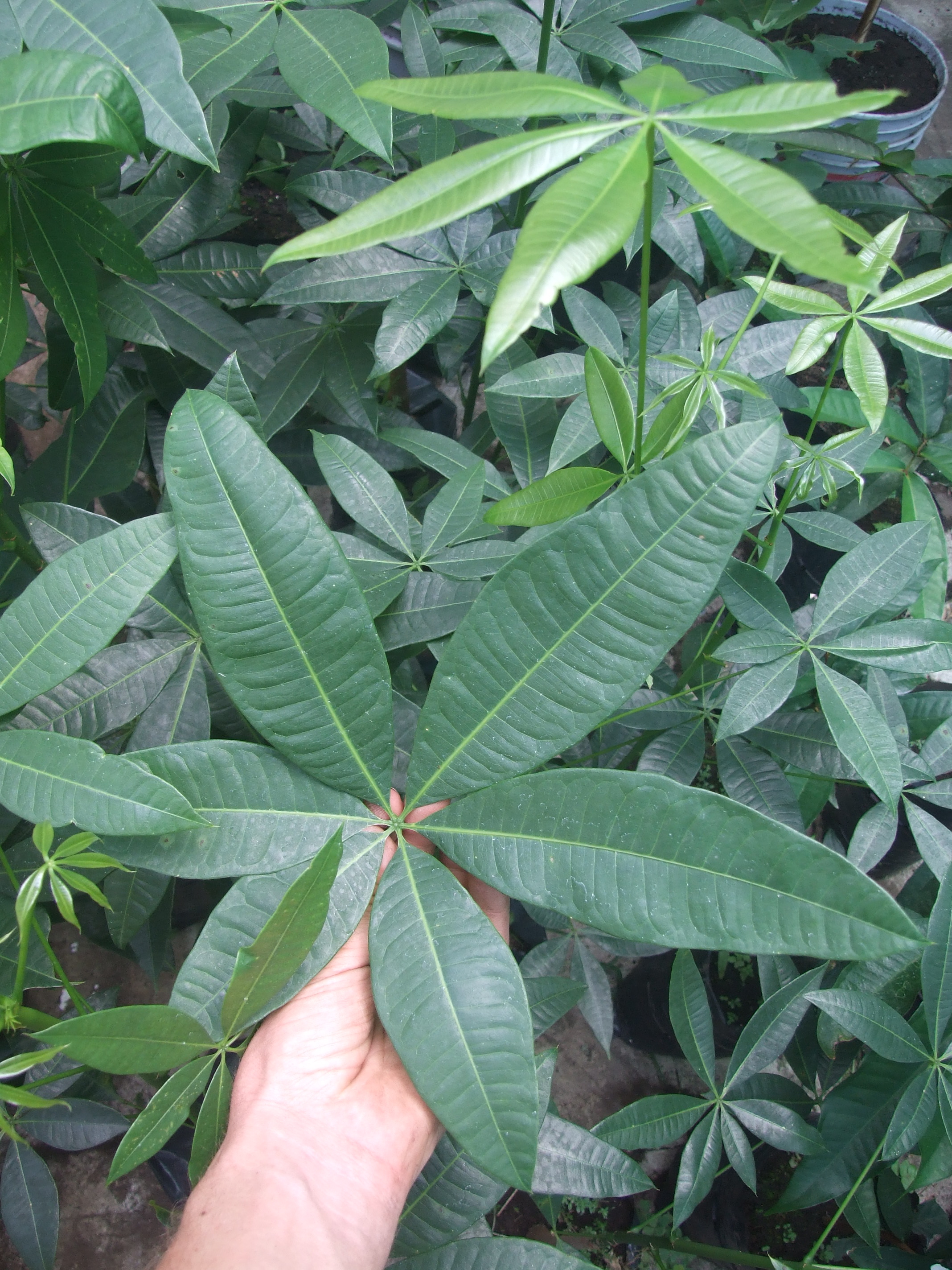Aristolochia grandiflora detail.
Brownea macrophylla - Rosa de Monte, Cuchillito
Passiflora seemanii
Here are some photos of a Passiflora variety I found on an island off the Northern Caribbean coast of Panama
Passiflora seemanii flower.
Passiflora seemanii close up.
Rubiaceae, Psychotria poeppigiana, hot lips, labios de puta
BACKGROUND< ORIGIN AND DISTRIBUTION
Native to the forests of Panama, this photo was taken in Soberania national park on the Pacific Side. The species ranges widely in the tropical Americas, from from Chiapas, Oaxaca, Tabasco and Veracruz in Mexico to the very north of Argentina. It does not occur on the Pacific side of the American cordillera however, and is thus absent from El Salvador and Chile. It is probably also absent from Uruguay and Paraguay.
PROPAGATION AND CULTIVATION
I have propagated this Psychotria poeppigiana from seeds and cuttings collected in the dry tropical forests on the Pacific Coast of Panama.
USES AND ETHNOBOTANY
This species has been used as a hunting fetish, as a magical talisman to facilitate hunting. The leaves and flowers would be placed in a bundle and tied to the collar of dogs when hunting taipir. In Suriname the plant is crushed then boiled, the resulting liquid can be used as wash for headaches. This same preparation can be used as an external wash for sprains, rheumatism, muscular pains and contusions.
The Wayana indians of Suriname use bark raspings from the stem and rub it on a skin rash known as "poispoisi". The red, sap-filled inflorescence are used for an antalgic to treat earache, administered by dropping the sap into the ear canal. The inflorescence is used to remedy whooping cough.
This species of psychotria has also been used as a P. viridis analogue in ayahuasca, containing significant amounts of DMT.
Sterculia apetala -Panama Tree
Annona spraguei
Annona spraguei is endemic to Panama and endangered in the wild. I have collected seed from wild stands in Soberania National Park, outside of Panama City in Central America.
The fruit is about the size of a fist, with a sweet edible pulp and numerous seeds. The fruit looks like a smaller version of Biriba (Rollinia deliciosa) only smaller with thinner, longer protuberances.
Rhamnaceae, Zizyphus mauritiana, Indian Jujube
Jujube is one of the five primary fruits in China, having been cultivated thereabouts for 4,000 some odd years, probably longer. The fruit is very common in parts of Asia, and increasingly so in the Medeterranian. The tree is best adapted to dry tropical climates and can be found throughout the tropics, although it is not very common outside of Asia.
The tree can reach 12 meters in height, although most of the ones I've encountered, propagated by approach grafting, are smaller, sprawling shrubs. In dry, colder areas the tree doesn't typically surpass 4 meters in height.
The Indian Jujube (Z. mauritania) and the Chinese Jujube (Z. jujuba) can be distinguished by the underside of the leaves. The underside of the Indian jujube leaves is covered with an almost cream colored fuzz. The fruit is usually the shape and size of a olive, although improved Chinese varieties can be larger than 6 cm in length. Each fruit contains a stone with two seeds.
The Jujube can be consumed in numerous ways: ripe or unripe, cooked, in sweets and jams, breads, cheeses, and a butter is prepared with the pulp. Juices are also made. In order to dry the fruits, one must wait until the process is initiated on the tree, the fruit ripens, becomes soft and then dries. The soft fruit has a higher concentration of sugars. Dried fruits are common, and can be conserved and consumed like raisins.
The wood is very strong, often used to make agricultural implements, also used to make a top quality charcol. The tree is commonly used as a living fence and windbreak in arid regions. Leaves are used as food for silkworms. The bark is used for tanning. The leaves and fruit are an excellent animal forage.
There are numerous superior grafted varieties of Chinese Jujube, including Lang, Li, Sui Men, Mu Shing hong, and Yu. There are over 125 known varieties of Indian Jujube in India, including "Gola", "Safeda", "Banarsi", and "Haichi".
High quality fruits contain up to 21% sugar, 1.5% protein, and are rich in calcium, fosforo and vitamin C.
The trees can be propagated by seed, approach grafting, cuttings and air layer.
Passiflora spp., Passiflora vitifolia
passiflora-soberania
Found this Passion flower variety in Soberania National Park, Panama. Need to go back and get a photo of the leaf.
passiflora-soberania2
Bombacaceae, Pachira quinata, Cedro espino
I'm pretty sure these are P. quinata trees, the photo was taken on a beach off the Caribbean coast of Panama. This is a fairly common tree in the area, its wood highly prized for its durability, widely used to make chairs, doors and other such craft.
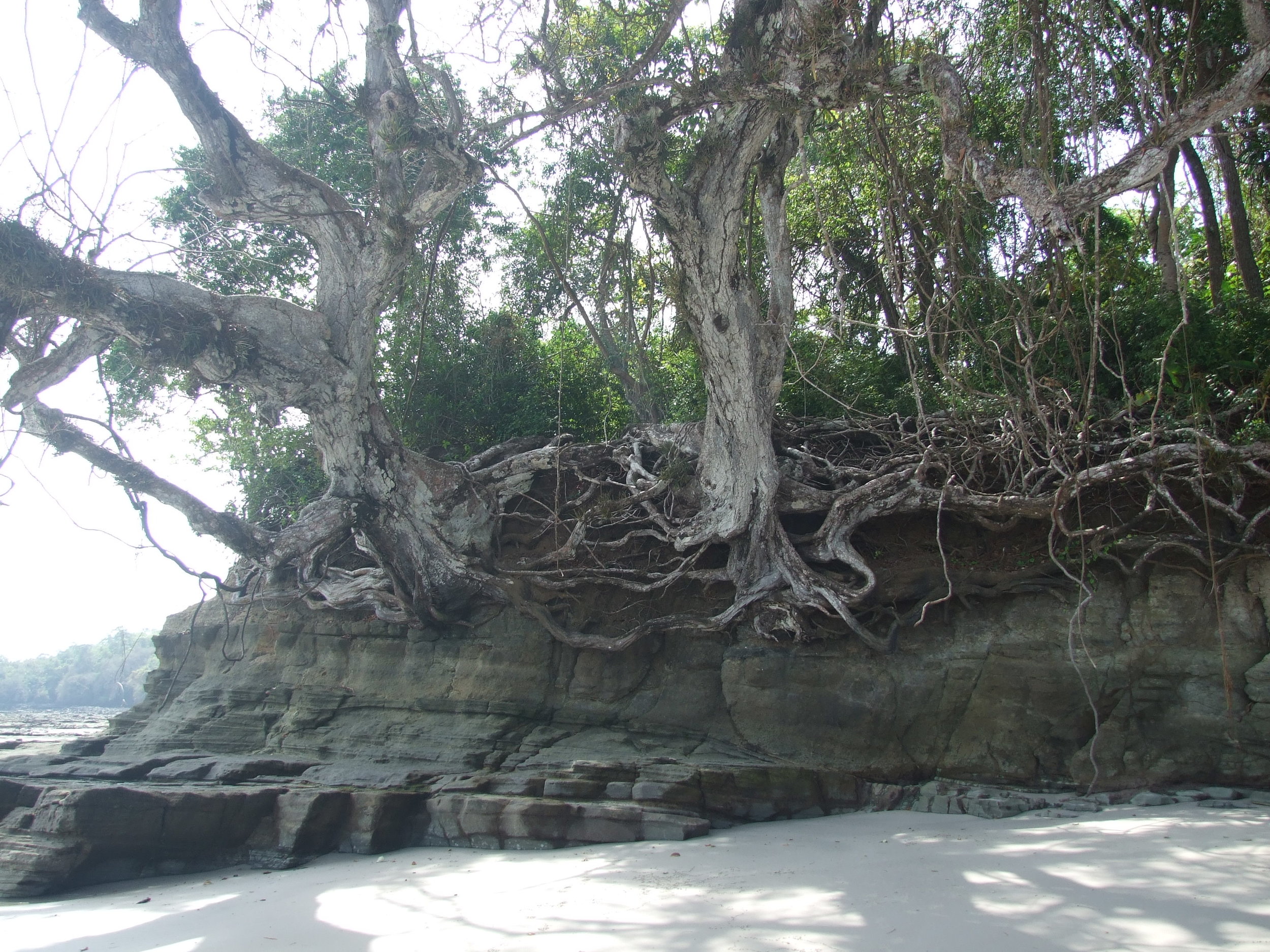
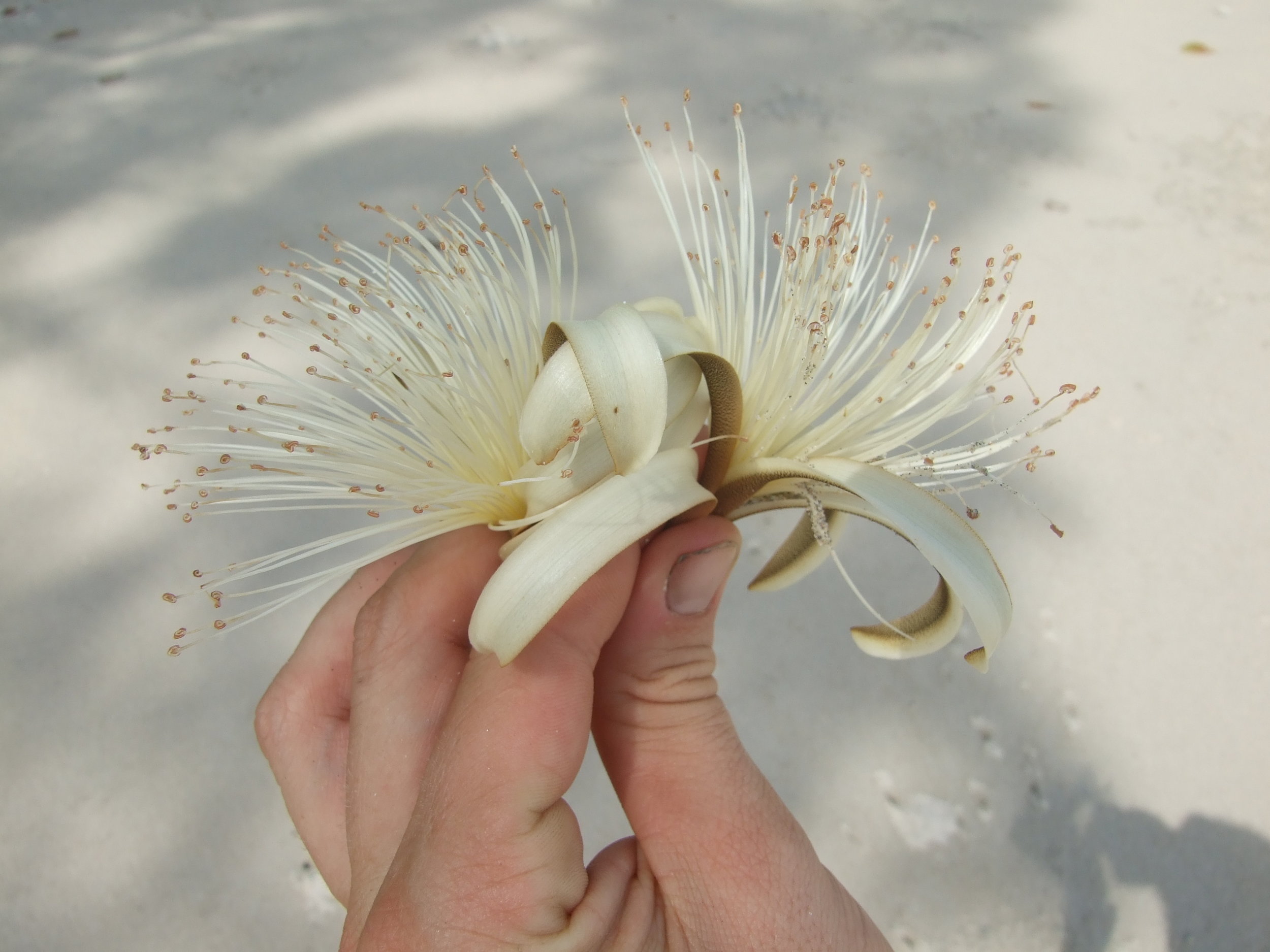
Bombacaceae, Pachira (Bombacopsis) glabra, Saba nut, American chestnut
I have about fifteen trees growing from seed I collected from a few trees I found planted along the street in a middle class neighborhood in San Jose, Costa Rica. In addition to this tree there were tropical olives (Simarouba glauca), citrus and macadamia nuts planted as street trees in the same neighborhood.
It is a small evergreen tree 4-6 m tall. The fruits are semi-woody capsules which stay green even when ripe. A pod contains many edible seeds which can be consumed raw or toasted/roasted/boiled. Considered to be one of the more notable underappreciated tropical food crops.
Like many of the Bombacaceae species P. Glabra has a very fat trunk to store water. Just after germination the girth of the trunk becomes noticeable, almost disproportional to the rest of the tree.
In Brazil the Saba nut is a fruit tree, cultivated as an ornamental in south-eastern areas of the country. It is not very frequent in its natural habitat, the pluvial Atlantic forests from Pernambuco to Rio de Janeiro and the flood plain forests of Para and Maranhao.
